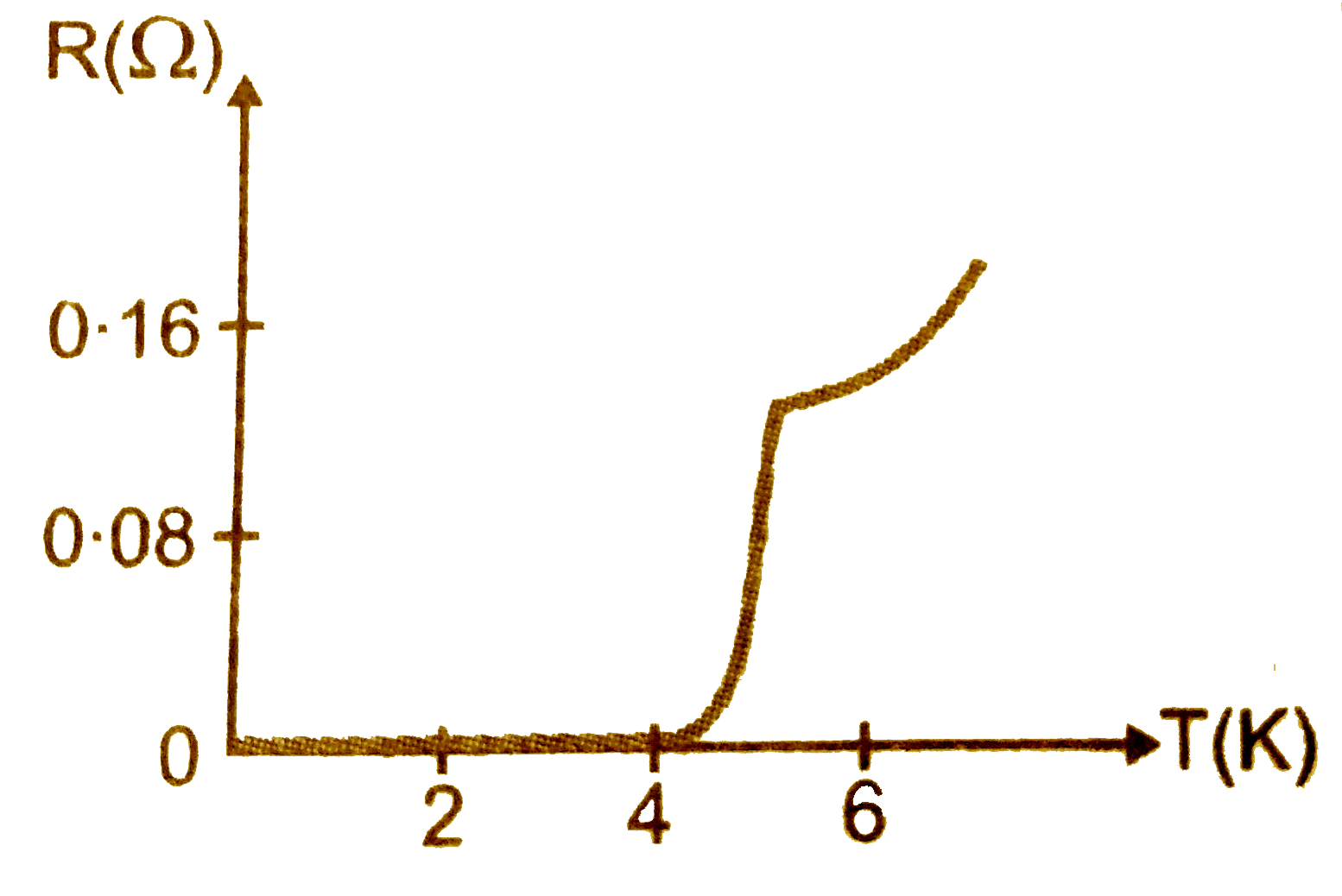Assertion : Resistance of mercury decreasing temperature. At very low temperatrure the resistance decrease rapidly. Below 4∘K it tends to zero.
Reason : Below 4∘K, mercury becomes a super-conductor.
If both Assertion and Reason are true and Reason is the correct explanation of Assertion.
If both Assertion and Reason are true but Reason is not correct explanation of Assertion.
If Assertion is true but Reason is false.
If both Assertion and Reason are false.
The correct Answer is:B
The phenomenon of superconductivity was discovered by Ones, while studying the resistance of mercury at low temperatures. Some substances become highly conducting at extremely low temperatures. Their resistance becomes zero and their current carrying capacity becomes ectremely high. Below 4∘K mercury becomes a superconductor.
Similar Questions
The given graph shows the variation of resistance of mercury in the temperature range 0 lt T lt 4 K. Name the phenomeon shown by the graph.

View SolutionAssertion: A glass of water is filled at 4∘C. Water will overflow, if temperature is increased or decreased. (Ignore expansion of glass).
Reason: Density of water is minimum at 4∘C.
View Solution
Knowledge Check
Assertion (A): Resistivity of a conductor, increases on increasing temperature.
Reason (R): As temperature increases, time between collision decreases.ABoth (A) and (R) are true and (R) is the correct explanation of (A).BBoth (A) and (R) are true but (R) is not the correct explanation of (A).C(A) is true but (R) is false.D(A) is false and (R) is also false.The temperature of germanium is decreased from room temperature to 100 K, the resistance of germanium
AdecreasesBincreasesCremains unaffectedDdepends on external conditionsAssertion : The resistance of super-conductor is zero.
Reason : The super-conductors are used for the transmission of electric power.AIf both assertion and reason are true and the reason is the correct explanation of the assertion.BIf both assertion and reason are true but reason is not the correct explanation of the assertionCIf assertion is true but reason is falseDIf the assertion and reason both are false
Assertion (A): An exothermic process, non-spontaneous at high temperature, may become spontaneous at low temperature.
Reason (R ) : With decrease in temperature, randomness (entropy) decreases.
View SolutionAssertion (A): An exothermic process, non-spontaneous at high temperature, may become spontaneous at low temperature.
Reason (R ) : With decrease in temperature, randomness (entropy) decreases.
View SolutionAssertion (A): The resistivity of semiconductor' decreases with increase of temperature.
Reason (R): in a conducting solid, the rate of collision increases with increase of temperature.
View SolutionAssertion: At 0K germanium is a superconductor.
Reason:At0K germanium offers zero resistance.
View SolutionAssertion (A): As the temperature of a semiconductor increases, its resistance decreases.
Reason (R ): The energy gap between conduction band and valence band is small.
View Solution
